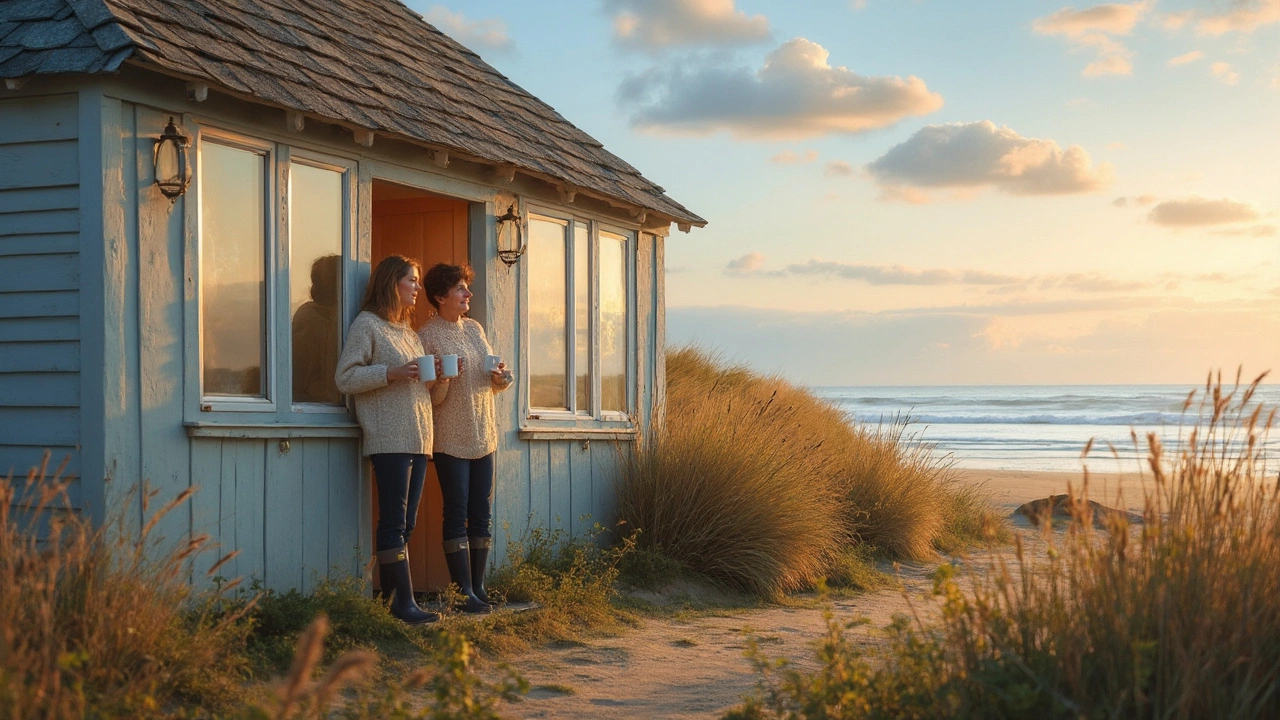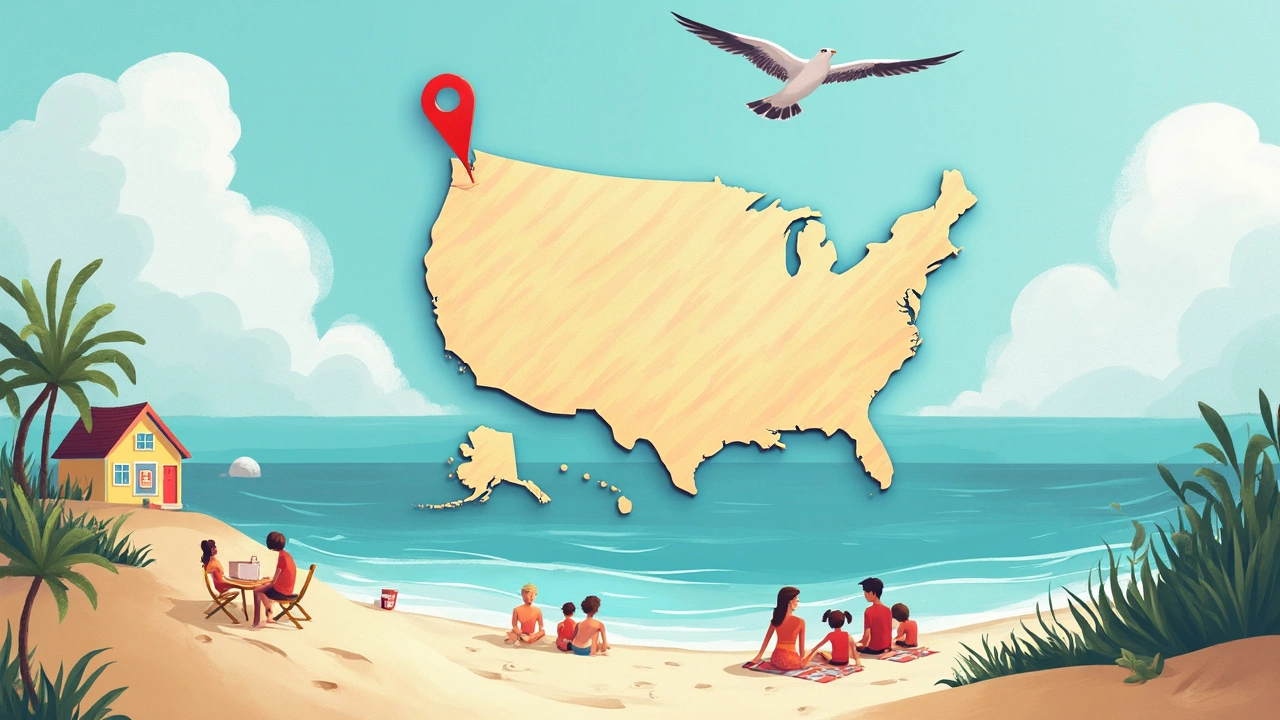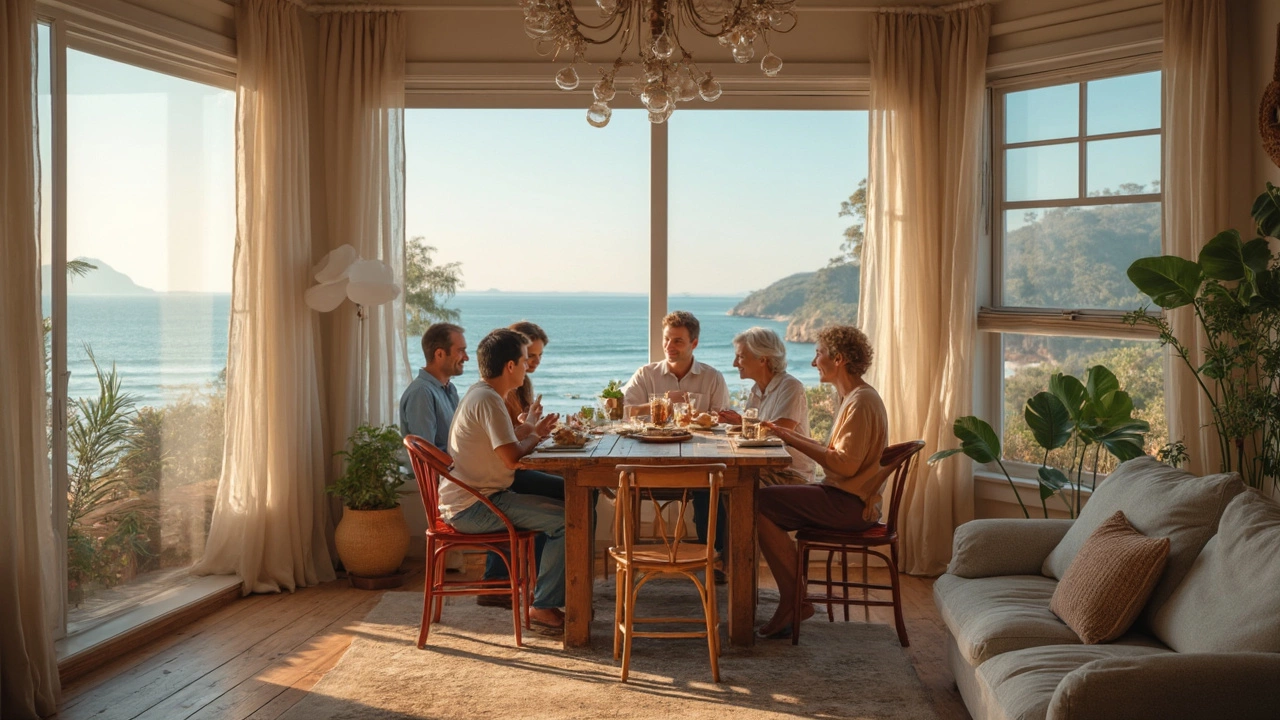Cheapest Oceanfront Property in the US: The 2025 State-by-State Guide
 Jun, 24 2025
Jun, 24 2025
Imagine stepping outside in the morning, salty breeze on your skin, coffee in hand, waves just twenty feet away. Most of us immediately picture luxury—maybe Malibu, or the Hamptons—but what if I told you there’s an entire world of affordable oceanfront property out there? Sure, prices have climbed since the pandemic, and some coastal towns now look more like country club enclaves. But dive into the data, and you’ll find places where beachfront living is shockingly within reach for regular folks. Curious which state lets you wake up to the sound of waves...without a trust fund?
The Truth: Which State Really Has the Cheapest Oceanfront Property?
Let’s cut to the chase— Mississippi snaps up the prize for the cheapest oceanfront property in the U.S. Going by Zillow’s latest 2025 waterfront data and the median price-per-square-foot, nothing beats the Gulf Coast towns tucked along Mississippi’s shoreline. You can still find homes for under $300,000, at a time when the average price of oceanfront property in California or Florida has soared way past $1 million. Inventory isn’t always huge, but deals pop up more often than you’d think.
Let’s break down why Mississippi wins: its stretch of coastline is small—only about 44 miles—and most people zoom past it on their way to New Orleans or Mobile. This keeps demand lower, while insurance and maintenance costs are gentler than on the storm-prone east coast. Cities like Bay St. Louis, Gulfport, and Ocean Springs offer charming, walkable downtowns, shaded by oaks, and the sand here is white, cushioning your toes even in July’s heat. The Gulf is warmer than the chilly Atlantic, and fishing, sailing, crabbing, or just floating in the shallows is basically a way of life. So it’s not just about cheap—it’s about easy.
Still, not every town along the Mississippi coast is created equal. Waveland, for instance, is rebuilding after Hurricane Katrina, so you might find deeply discounted lots or fixer-uppers that need a little TLC. Bay St. Louis is trendier, a favorite with New Orleans’ spillover crowd, so you’ll compete with more out-of-towners and weekenders buying up bungalows for vacation rentals. On the plus side, Mississippi has no state property tax on owner-occupied homes, and you’ll find lower overall cost-of-living compared to just about every other oceanfront state. Groceries, utilities, insurance—they’re all more affordable here.
Don’t gloss over the hurricane risk, though. It’s real, and you’ll want to budget for extra insurance—wind and flood, not just a standard homeowners policy. But it’s still cheaper than what you’d pay in Texas or Florida, especially now that Florida’s insurance market has gone a bit haywire. Rentals can do surprisingly well on these beaches; with Gulfport’s new harbors, casinos, and family-friendly festivals, tourists are returning in droves. Even with local politics being a bit old-fashioned, life here moves at a soft, Southern pace. Eulalie always says the crabs here taste better because they’re caught by hand, not machine. Kids dig for shells, and you might be the only pizza delivery on your block—doesn’t sound like urban misery, does it?
| State | Median Oceanfront Home Price (2025) | Average Price per Sq Ft | Typical Property Tax Rate | Notes |
|---|---|---|---|---|
| Mississippi | $299,000 | $210 | 0.81% | Cheapest, small coastline |
| Alabama | $410,000 | $305 | 0.41% | Gulf Shores is pricier, bigger demand |
| Florida | $1,120,000 | $610 | 0.97% | High demand, insurance hikes |
| Oregon | $695,000 | $410 | 0.90% | Cool climate, limited sunbathing |
| California | $2,195,000 | $1,110 | 0.71% | Most expensive, big HOA fees |
If you want a quick reality check, the Mississippi Gulf Coast usually features at least 20 oceanfront homes under $400,000 on Zillow at any given moment (June 2025 numbers). By contrast, Oregon and Washington can be affordable—especially closer to the gray, chilly beaches like Long Beach or Rockaway—but you’re trading year-round sun for misty mornings and more driftwood than sunbathers. Plus, West Coast homes tend to be smaller bungalows or cabins.

Why Not the Classic Favorites? Housing Realities along Other U.S. Coasts
Ever find yourself scrolling Redfin for dreamy beachfront escapes, only to get sticker shock in Florida or the Carolinas? The reality is, demand for sun-soaked coastal homes has exploded. Remote work, retiring Baby Boomers, and sheer FOMO have led to sometimes comically high listing prices. In Florida, the median price tag for a modest, dated oceanfront condo stretches easily into seven figures, and insurance premiums keep climbing thanks to that annual hurricane anxiety. Even Alabama’s coastline (famous for powdery white sand in Gulf Shores and Orange Beach) can’t touch Mississippi on price anymore. Its popularity has shot up, and so have average home values, especially near the Florida border.
What about the East Coast? North Carolina’s Outer Banks and South Carolina’s Myrtle Beach were once affordable, but both have seen huge jumps since 2020. Rents spike every summer, and permanent homes cost twice what they did a decade ago. Even in less-known spots—say, Virginia’s Eastern Shore or Maine’s Downeast communities—the secret’s out. “Affordable” now means $600K and up for anything with a view and private beach access.
Some folks look west, dreaming of Oregon’s moody cliffside cottages or the forest-lined beaches near Crescent City in Northern California. Here, you do get a bit more for your dollar than Orange County or Malibu, but weather is a different beast: foggy more days than it’s sunny, and ocean water that feels like an ice bath year-round. Plus, strict land use rules on the Pacific can limit new builds or make renovations tricky.
Still, there’s nothing quite as serene as sipping coffee by the morning surf, no matter the state. A friend of mine tried to do it the DIY way in Texas, where prices are comparatively reasonable on South Padre Island, but wind insurance is steep and rental rules are always in flux. So, while you may spot deals along Lake Michigan or Chesapeake Bay, if you want honest-to-goodness “oceanfront” on the cheap, Mississippi’s coast is your secret weapon. Secret…for now, anyway.

What to Really Expect When Buying Cheap Beachfront: Pitfalls, Surprises & Insider Tips
You’ve spotted a photo of a sun-bleached cottage, sand just steps away, price half of what you’d expect—should you jump in? Here’s where reality bites, but if you’re smart, you’ll dodge the biggest headaches. Cheap doesn’t always mean cheerful. Run-down roofs, mold, and deferred maintenance crop up a lot on older Gulf Coast and Pacific Northwest homes. Storm shutters aren’t cute, but they can save you thousands during hurricane season, and you’ll want to check if your place is in an official FEMA flood zone. Mississippi’s newer builds have spiffier engineering and stricter codes, but older homes can be bargains (if you’re handy or willing to hire a local contractor—it’s typically much cheaper than in California or Florida, by the way).
One of the best tricks is to widen your search to smaller towns just off the major resort strips. That’s where you’ll find authentic pier houses, sleepy marinas, and where you can still get to know your mailman. Lots of these places have flat, dog-friendly beaches, and the town councils encourage new buyers with grants for first-time homeownership or sometimes even tax breaks for homesteaders. Can’t swing a full house? Check out condos or land lots a block off the beach, which can be half the price of direct oceanfront but still walkable—perfect for a starter investment or snowbird escape.
If culture matters (it does to me—Eulalie needs her library and art days), Mississippi’s coast cities punch above their weight. Ocean Springs has live music on every long weekend and seafood festivals where nobody puts on airs. Gulfport is working on a new boardwalk and family-friendly entertainment district as of summer 2025. Just keep in mind, school quality varies—if you’ve got kids, make sure to look at GreatSchools.org ratings and see what after-school programs are actually offered.
A weird quirk? In some beach towns, you’re technically buying the land, but access to the actual sand is public property—a blessing for beach walks, but double-check the deed. Short-term rentals (Airbnb, Vrbo) are welcome in most of coastal Mississippi, and rental returns are strong during spring and fall, but check local ordinances for any hidden restrictions or permitting fees. Also, chat with neighbors—many places have an unofficial "locals only" knowledge base you don’t learn until you live there, from crab-trap rules to which diner serves the best gumbo.
Thinking of future-proofing your investment? Look for neighborhoods investing in sea walls, raised construction, and smart flood planning. You want roofs rated for 120mph winds and modern hurricane windows. Utility bills can spike in muggy summers, so ask about insulation or energy upgrades in your chosen home. Major insurance carriers offer discounts for fortified roofs and storm shutters, sometimes trimming your premium by hundreds per year. And while interest rates have risen since 2022, mortgage competition is fiercest for coastal zip codes—don’t be afraid to negotiate points or closing costs, especially when fewer buyers are in the market mid-year.
Last but not least: check your internet! Not all small towns have high-speed broadband yet, and if you work remotely, this can make or break your plans. Mississippi has launched a new rural fiber initiative in early 2025, so coverage is catching up every month. Cozying up to the Gulf has never seemed so possible—just keep your eyes wide open and don’t skimp on a home inspection. Your wallet (and your sea-chilled toes) will thank you for it.